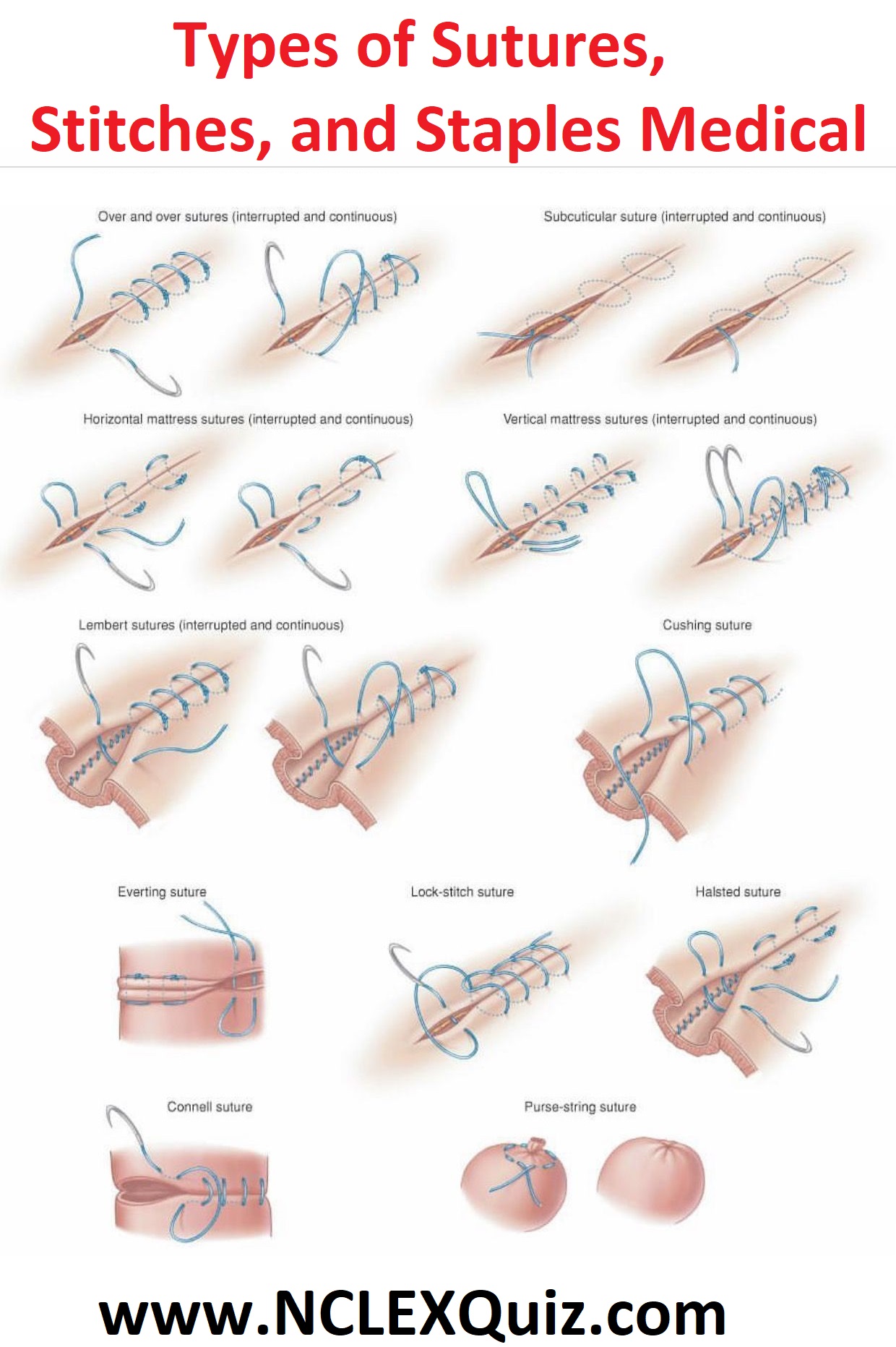Types of Sutures and Stitches
Sutures can be either absorbable or nonabsorbable. Absorbable sutures are intended to be broken down by the body over time and eventually dissolve completely. Some materials used to make absorbable sutures are derived from animal products that have been specially processed. Other absorbable sutures are made from synthetic polymer materials such as polylactic acid (Vicryl), polyglycolic acid (Dexon), polyglyconate (Maxon) and polydioxanone (PDS).
Permanent, nonabsorbable sutures are sometimes preferred because they are resistant to body chemicals that might otherwise dissolve them too early in the healing process. Non-absorbable sutures are useful for maintaining long-term tissue wound closure (apposition) and healing. Non-absorbable sutures can be made from nylon, polypropylene (prolene), or silk.
Stitches can be divided into the following sub-types:
- Continuous stitch: This is quick to perform using the same suture line without cutting, which helps distribute the tension along the length of the stitched wound.
- Simple interrupted stitching: The same suture line can be used more than once to make separate stitches that allow for more precise closure of the tissue, especially that of skin and fascia.
- Mattress stitches: These can be placed either vertically or horizontally. Mattress stitches go deeper into the skin layers and allow for excellent closure of incision edges while minimizing tension.
- Sub-cuticular stitch: Using an absorbable suture, the stitch is made at the dermal-epidermal junction to allow for better closure so that postoperative suture removal is unnecessary. This stitch is a convenient technique to close skin incisions.
Staple types are classified according to their material or shape. Medical staples are most commonly made from titanium or stainless steel. However they can also be made from other materials like iron, chromium, nickel or plastic. Medical staples may be straight, curved or circular.
Master the art of suturing like a pro! Share this comprehensive cheat sheet on the types of sutures and stitches with your nursing peers and elevate your clinical skills. Pin it now on Pinterest!
